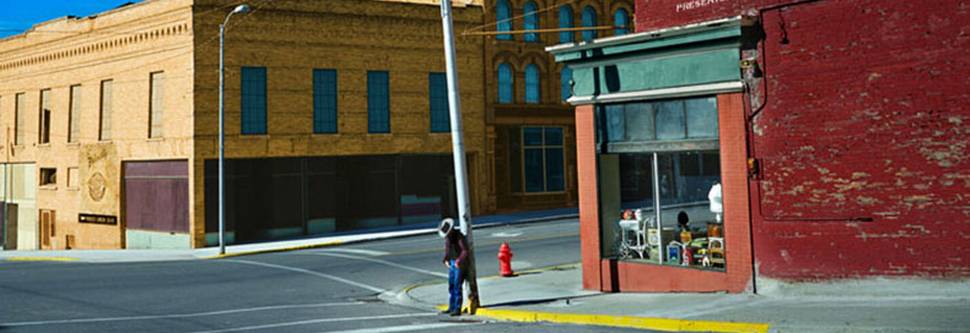
DoP Franz Lustig talks with Vantage
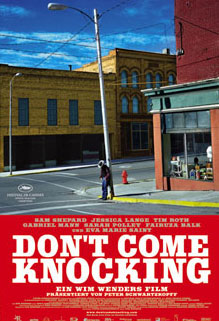
In August cinematographer Franz Lustig came to Munich to screen a direct print of "Don´t Come Knocking", his second feature film with director Wim Wenders after "The Land of Plenty". "Don´t Come Knocking" was shot in Butte, Montana, and released to a widespread critical acclaim last month. Starring Sam Shepard and Jessica Lange the film depicts the drama of a modern-day cowboy, who has seen better days. Franz Lustig's magnificent cinematography evokes memories of the Old West and gives the film the melancholic look of an Edward Hopper painting.
Vantage equipped the film with the Hawk V‑Series Anamorphics. In Munich Peter Martin, Vantage Film, talked to Franz Lustig about making the film and working with Hawk Anamorphics.
"Don't come knocking" is your second film with Wim Wenders. How would you describe your co-operation? .
Wim and I trust and understand each other without a lot of words, both on a visual and human basis. For me, working with him is a highly inspiring experience. Wim is a director who knows exactly what he wants and what the film needs. Also, I admire the strength with which he managed the tough 36-day shooting schedule..
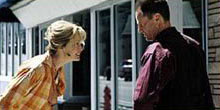
What made you decide to shoot "Don't come knocking" on Hawk Anamorphic Format?.
Actually, the idea goes back to the very first production meeting. For Producer Peter Schwartzkopf, Wim and me it just felt right to handle the script in a modernized old school sort of way. So we decided to use an anamorphic format and analog lab process in post. Also, the digital intermediate process would have cost about 100.000 € more - and would have taken double the time..

When prepping for the film, however, we realized that true anamorphic is by nature more expensive than a spherical format. One reason for this is that US rental firms make it their policy to provide cameras preferably as a package deal with a complete set of lenses. Worse yet: There is no complete set of anamorphics available in the U.S. which would have covered all my needs, notably the 120mm macro lens. So I contacted Vantage. When I visited their rental facilities and factory I was impressed both with their fine work and their palpable love for filmmaking ...
To make a long story short: We had to raise the camera budget a bit. But in the Hawks proved to be worth their price.
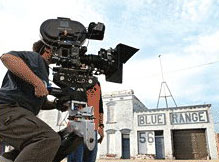 Vantage supplied almost the complete range of the Hawk V-Series Primes and Zooms for "Don't Come Knocking". How would you describe your recent experience with our lenses?
Vantage supplied almost the complete range of the Hawk V-Series Primes and Zooms for "Don't Come Knocking". How would you describe your recent experience with our lenses?
I was very satisfied with the technical tests we did at Otto Nemez. Then, when working with the Hawks I especially enjoyed their stunning optical quality. I wanted a crystal-clear, almost hyper realistic look in a "polished" classical way. The lenses' sharpness was very appropriate for keeping all the beautiful details of the faces and landscapes.
How did you like intercutting primes and zooms?
As I mainly work with primes I started out to be quite skeptical about the zoom. However, the Hawk V‑Series 46-230mm/T4 zoom lens gave us perfectly brilliant pictures and covers a very needed range. So, after the first rushes we began to intercut zooms and primes. In the end we used the zoom much more than expected, on the Techno and Remote Head, for example, there was always the zoom. We also used a "creeping zoom movement" to intensify long takes and for some shots the great Hawk V‑Series 300-900mm/T4 zoom lens.
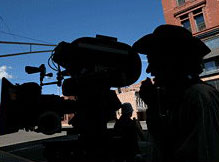
Which T-Stop did you use and how is it working wide open?
According to my log books we had a T5.6 or T8 in the exterior takes, which are mostly shot on 5212. Depending on the focal lengths I varied the stop because of the blurr effect in the out of focus area and the amount of background details we wanted to show. In scope the effect seems to double, somehow. For me, this is a very important part of composing images. I made even more interesting discoveries when we shot at night exteriors: First, pushing the 5218 anamorphic full negative didn't result in more grain. Instead, it gave us deep blacks and perfect printer lights. I'm not sure, whether you can achieve this with other anamorphic lenses. Anyway, for us it was perfect, as we didn't have the budget for more light equipment and a bigger crew.
Second, in night exteriors T2.8 1/2 works fine as far as contrast and sharpness are concerned. To do this, however, you need a truly superb focus puller - such as we had in Jay Levy. Both Wim and I were impressed how he tackled the most impossible difficulties. For example: In the scene where Sam Shepard drives to see his mom in the dusk with nothing but a mobile phone as key light we did a close-up with him on the 120mm macro. The depth of field was zero in this quite long take. That's exactly were Jay's skill came in.
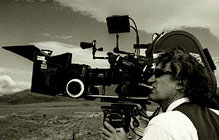
The Hawks are larger than spherical lenses. How did you find their handling especially with handheld/Steadicam?
Vantage lenses and matte box systems can be handled very fast and effectively. Especially the matte box system is very cleverly thought out. Steadicam operator Tom Lohmann loved the Hawks in combination with the Arricam LT and found it easy to use the V‑Series primes (50/60 and 75mm) on the steadicam. They balanced well, and I think Tom and Jay performed extraordinary work in the casino scenes which are entirely shot an steadicam pushed on a T2.8 1/2.
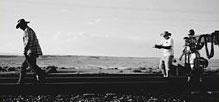
How did the lenses work with highlights or flares?
Sometimes you try to catch flares on purpose to show that you shot true anamorphic. It was quite difficult to get this effect with the Hawks. When we shot the lens flare of the title sequence with the morning sun hitting the lens more or less dead center the effect was marvelous. I had the iris on remote and corrected it a bit in the phase of the flare. Another subtle flare we did on purpose was created by a Porsche Cayenne Xenon headlight in the night scene where Sutter examines Howard's car at the bus station. Today, of course, I would use Vantage's new PV-Effect to create as much horizontal blue flares as I wish ... See October news on this website.
Thank you for the interview Mr. Lustig.
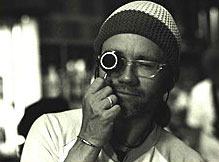
Franz Lustig, born 1967 in Freiburg/Germany, began his work as a freelance camera assistant. Since 1994 he has been working as director of photography for advertising and music videos with leading directors like Tarsem, Wim Wenders and Ralf Schmerberg. After some short films and documentaries, his first feature "Land of Plenty" premiered at the 2004 Venice Film Festival. Franz Lustig earned awards for both his advertising and film cinematography: for example the German Video Clip Award and the "Förderpreis der Filmstiftung NRW" for camera and editing. "The land of plenty" was nominated for the German Film Award for Best Camera.
Don't Come Knocking - Photos
© 2005 Reverse Angle Production,
all rights reserved.
All photos by Donata Wenders and Wim Wenders.